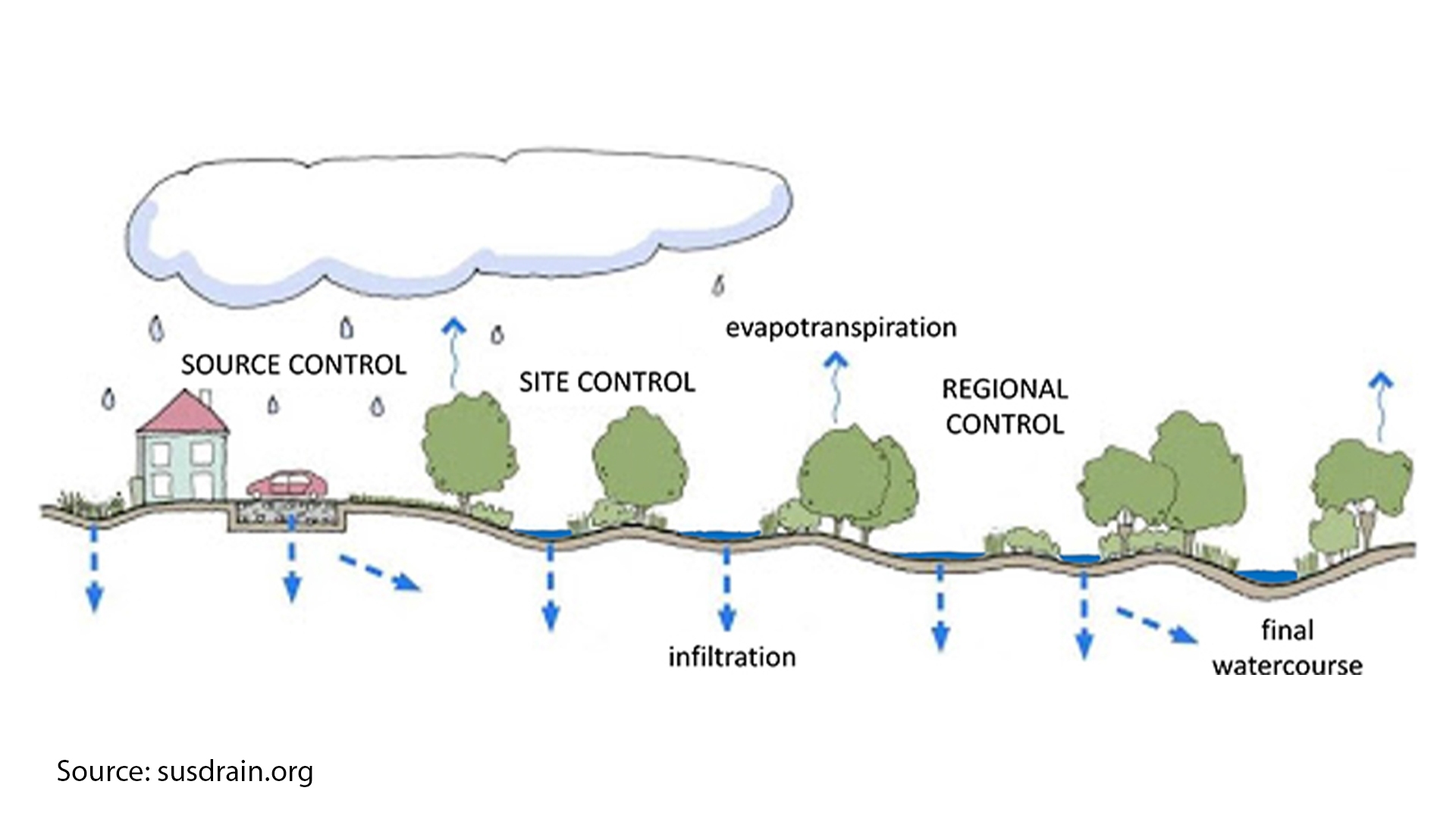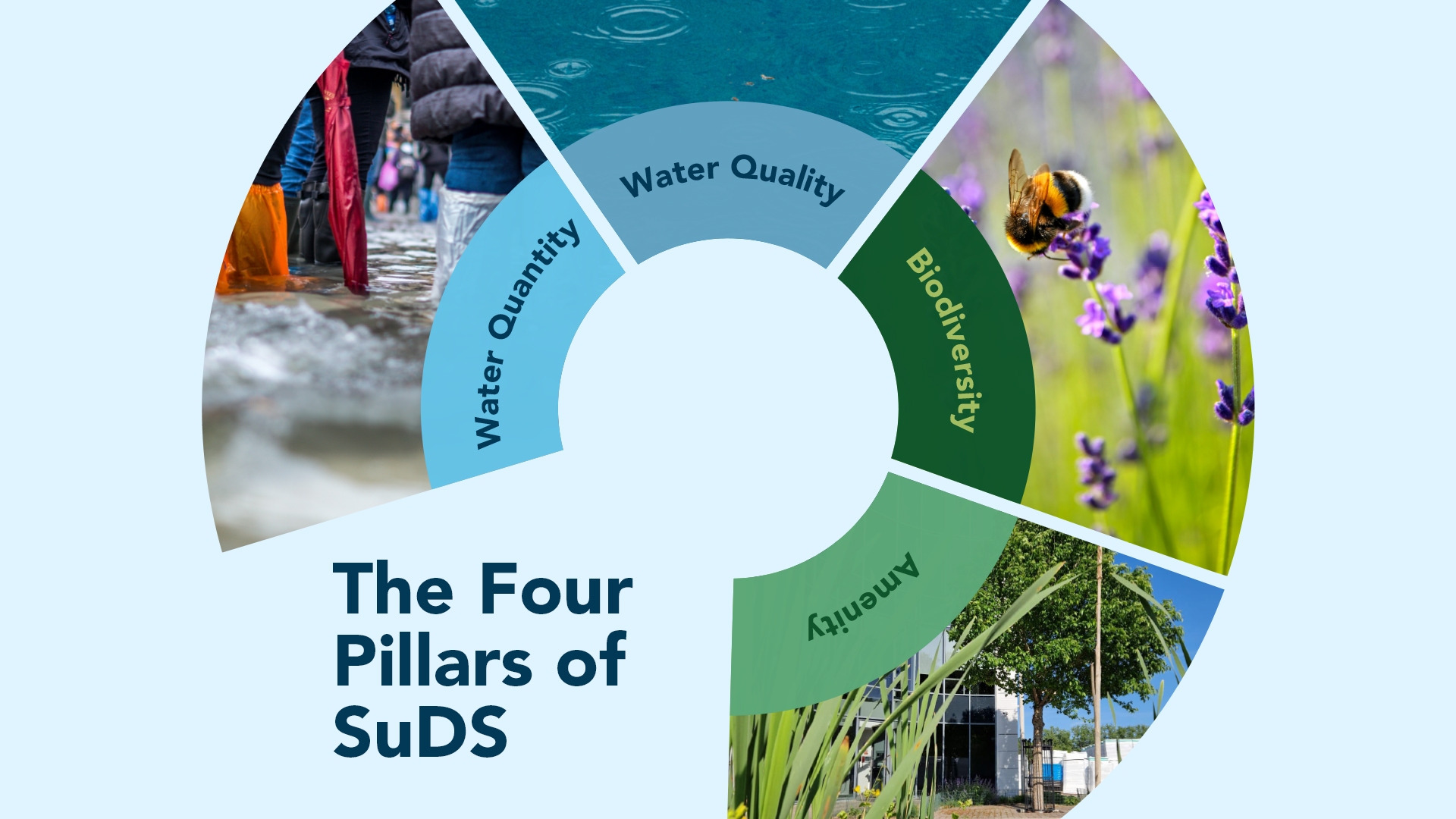As our towns and cities continue to expand and face the challenges of climate change, integrating the four principles of sustainable urban drainage becomes imperative for managing water efficiently and responsibly. With UK legislation changing the way for a greener, more resilient urban environment it is ever more imperative to have a full understanding of sustainable urban drainage as a shift from the traditional approach to grey drainage methods, thus creating harmony in what would otherwise be a concrete jungle.
The Sustainable Urban Drainage System (SuDS) management train, occasionally represented as the treatment train processes the natural catchment sequence of drainage methodologies. The management train concept promotes the division of the area to be drained into sub-catchments with different drainage characteristics and land uses, each with its drainage strategy
When separating catchments into sections it is important to ensure an understanding of how this affects the whole catchment management and the hydrological cycle.

Source Control
Source control is the foundation of sustainable urban drainage, emphasising the importance of managing water as close to its source as possible. The UK’s National Planning Policy Framework (NPPF) – (Schedule 3), has recognised this principle and requires local authorities to adopt sustainable drainage systems (SuDS) for all new developments. SuDS aim to mimic natural processes by promoting nature-based solutions to allow infiltration, attenuation, and storage for reuse of rainwater, reducing the burden on traditional drainage systems and minimising flood risks.
Site Design
The second principle focuses on the design of urban spaces to integrate natural features that facilitate sustainable drainage. UK legislation, such as the Flood and Water Management Act 2010, encourages developers and planners to incorporate green infrastructure, such as rain gardens, blue/green roofs, and tree pits, into their projects. These measures not only improve water management but also enhance biodiversity, air quality, and overall urban aesthetics.

Conveyance
Efficient conveyance systems are crucial for safely transporting excess water during heavy rainfall events. UK legislation, including the Water Industry Act 1991, plays a vital role in regulating water companies and ensuring the proper maintenance of drainage infrastructure. Additionally, the Flood Risk Regulations 2009 require local authorities to assess and manage flood risks in their areas, promoting better conveyance solutions (flood routing & drainage exceedance) to protect communities from potential flooding.

Water Quality
Maintaining water quality is paramount for the health of ecosystems and public safety. The Water Framework Directive (WFD) and the Environmental Permitting (England and Wales) Regulations 2016 impose strict standards for water quality in surface waters. Sustainable urban drainage systems contribute to improving water quality by filtering pollutants and promoting natural treatment processes, benefiting both the environment and society.
Sustainable urban drainage is no longer a choice but a necessity for creating resilient and liveable towns and cities in the UK. As we’ve explored the four principles of sustainable urban drainage and their alignment with UK legislation, it becomes evident that embracing these principles is essential for harmony in the concrete jungle. By integrating source control, site design, conveyance, and water quality measures, we can mitigate flood risks, enhance biodiversity, and foster a more sustainable future for urban landscapes. Let’s work together to ensure that our towns and cities flourish as resilient, water-wise environments that thrive in the face of climate change challenges. Together, we can achieve harmony in the concrete jungle.
A simple overview and glossary of urban drainage has been formulated by GreenBlue Urban. There are many approaches to delivering SuDS, some key considerations can be found here.


